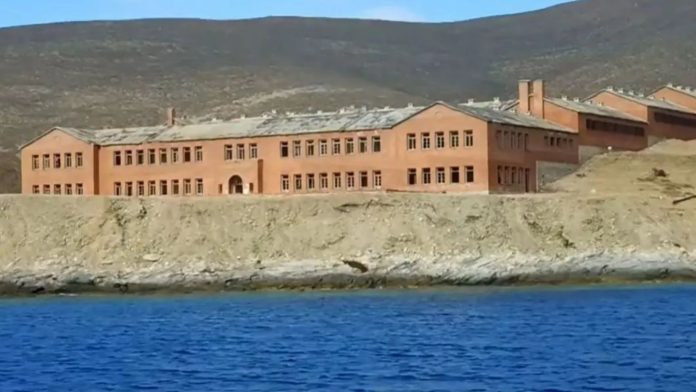Gyaros Island: The Enigmatic Paradise with a Dark Past Awaits Your Discovery!
Gyaros Island, famously labeled the "Island of the Devil," has been a ghostly silhouette on the horizon of the Aegean Sea for nearly half a century. Once bustling with human activity, it now stands solemn and deserted, save for a monumental, derelict prison that once imprisoned thousands of exiled individuals. This island, shrouded in mystery and historical weight, is slowly emerging as a potential tourist hotspot, presenting a unique blend of breathtaking natural beauty and a haunting past.
The History Behind Gyaros Island’s Abandonment
Gyaros is not just a pretty face; its history is as rich as its landscapes. Spanning approximately nine square miles, this island was a notorious exile site during the early days of the Roman Empire. High-profile figures who defied imperial authority found themselves castaway here, leading to a legacy defined by desolation and despair.
Fast forward to the Greek Junta era (1967-1974), during which Gyaros served as a punishment ground for political dissidents. The Greek Reporter aptly described it as a realm of "exile and torture," with historical records indicating its use as a prison even back in 10 AD. Those unfortunate enough to find themselves here endured not just confinement but also severe torture and forced labor, giving Gyaros the chilling nickname it still holds today.
The Abandoned Prison: A Stark Grim Reminder
The island’s enormous red-brick prison, an eerie monument perched on rugged cliffs, was a place of unimaginable suffering, holding over 10,000 men between the years of 1948 and 1953. Today, the prison stands in ruins, a haunting reminder of the dark chapters in human history.
North of the main prison structure lie the remnants of various camps, where prisoners were forced to endure the elements year-round. This stark landscape brings grave sorrow but also serves as a site of remembrance; each year, former prisoners return to honor those who endured unimaginable trials due to their political beliefs.
Nature’s Resilience Amidst Historical Sorrow
What’s astonishing about Gyaros Island is how nature has thrived, shrouded by shadows of its past. Today, the island is largely home to the Mediterranean’s largest colony of monk seals. The crystal-clear turquoise waters that caress its pebbled shores seem to juxtapose the sorrowful history marked by the prison’s crumbling walls.
Gyaros Island remains an unknown paradise, mostly untouched and off-limits to the public. Access is limited solely to organized tours, ensuring that its natural beauty and poignant history coexist harmoniously.
Plans for a Future as a Tourist Destination
Despite its troubled past, there are ambitious proposals to transform Gyaros into a tourist destination. Greek authorities are considering extensive renovations to install essential infrastructure, including electricity and water, truly turning the island into a potential haven for visitors. The World Wide Fund for Nature, aware of its fragile ecosystem, has advocated tirelessly for environmental protection around the island—for the species that dwell in its waters and on the shores that have been both witness and victim to the darkest human actions.
"We envision Gyaros as a unique site where history and ecology meet," stated a spokesperson from the organization, reflecting a commitment toward conservation and remembrance.
Navigating the Ethical Dilemma of Tourism
While there is excitement about the potential for tourism, many Greeks harbor reluctance. For them, the island symbolizes a painful history, and turning such a sensitive site into a tourist attraction raises ethical questions. Can we responsibly enjoy its beauty without overshadowing the memories of those who suffered?
A compelling anecdote involves Roman Senator Silanus, who, accused of treason back in 10 AD, was slated to be imprisoned on Gyaros. Yet, due to its harsh conditions, he was exiled instead to a nearby island. Historians reveal that Gyaros was often referred to as an island for “particularly vile criminals," emphasizing the harshness imposed upon its prisoners.
A Place of Remembrance: Gyaros’ Ancient Graves
As you traverse the island, remnants from the past are palpable; visitors stumble upon ancient gravestones nestled within the cemetery, each stone whispering tales of lives once lived. It’s a place for reflection, where the depths of human suffering are etched into the island’s very soil.
Exploring Gyaros Island: The Call of Adventure Awaits
Exploring Gyaros is more than a mere adventure; it’s an introspective journey through history and nature’s resilience. With untouched beaches, serene waters, and the somber shadows of a once-bustling prison, Gyaros invites you to experience its contrasts.
As discussions continue about how to embrace tourism while respecting its history, Gyaros stands at a unique crossroads. Whether as a tourist destination or a beacon of remembrance, Gyaros Island beckons with its haunting beauty, urging all who hear its silent call to understand and honor its narrative.
Will it transform into a celebrated location filled with life and joy? Or will it retain its eerie silence, a solemn guardian of its dark past? Regardless of the path chosen, Gyaros remains an enthralling chapter in the greater story of the Aegean Sea’s enchanting islands.

